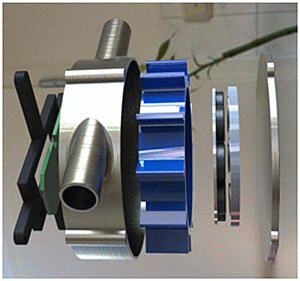Development of a Digital and Battery-Free Smart Flowmeter
Abstract
:1. Introduction
2. Design and Construction of a Smart Flow Meter
2.1. Ultra Low Power Metering System

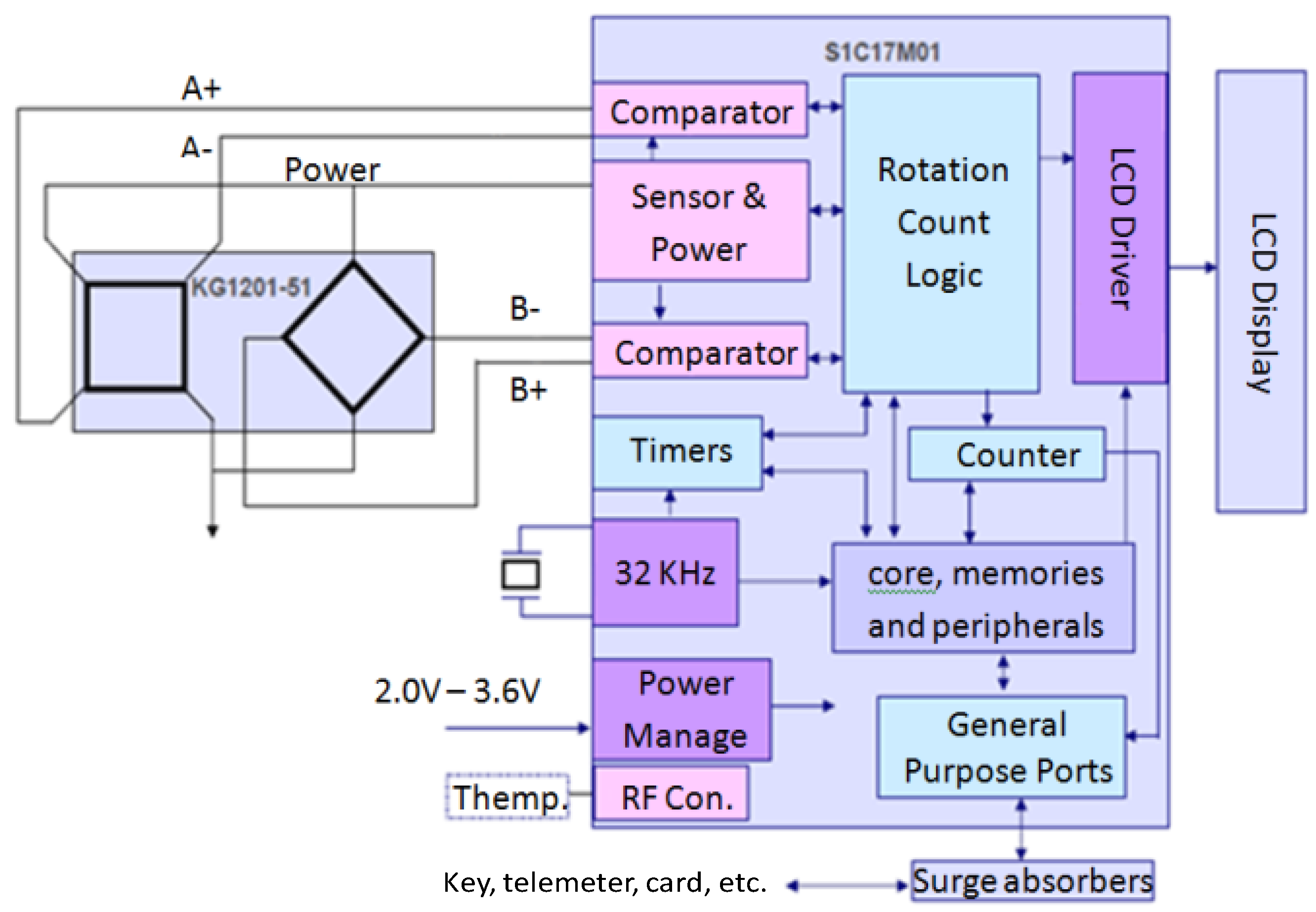
2.2. Cog-Resistance-Free and High Efficiency Generator


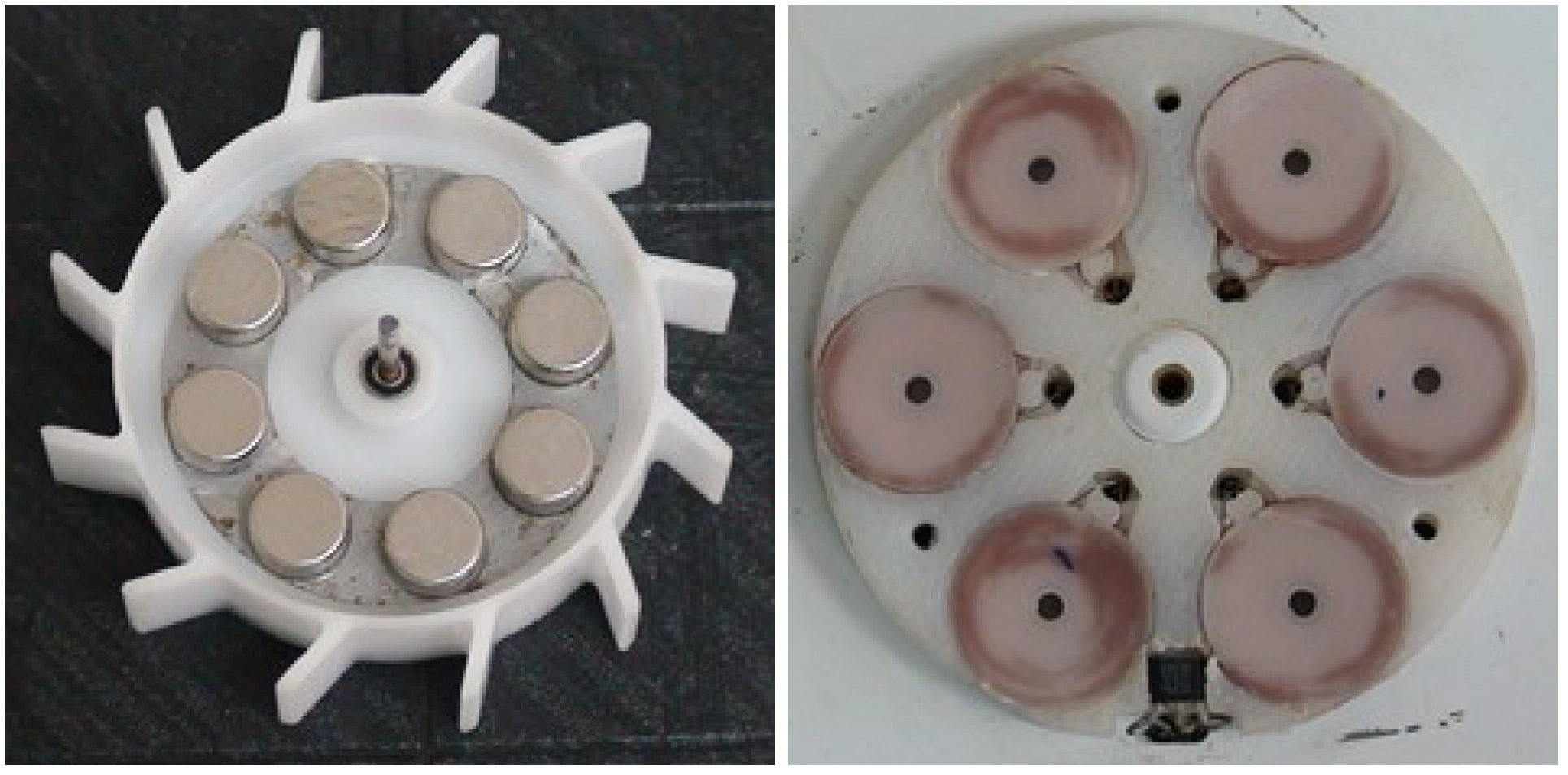
| Phase | 3(Y) | Air-Gap (mm) | 0.5 |
|---|---|---|---|
| Pole | 8 | Stator diam. | 50 |
| Slot | 6 | Rotor diam. | 46 |
| Rotor Yoke | S45C | Coil (turns) | 900 |
| Stator | PEEK | Speed (RPM) | 300–1500 |
| Magnet | NEOMAX-35 |

 ); t for time [s] and A for area (m2). Therefore:
); t for time [s] and A for area (m2). Therefore:



2.3. Energy Harvesting Technique

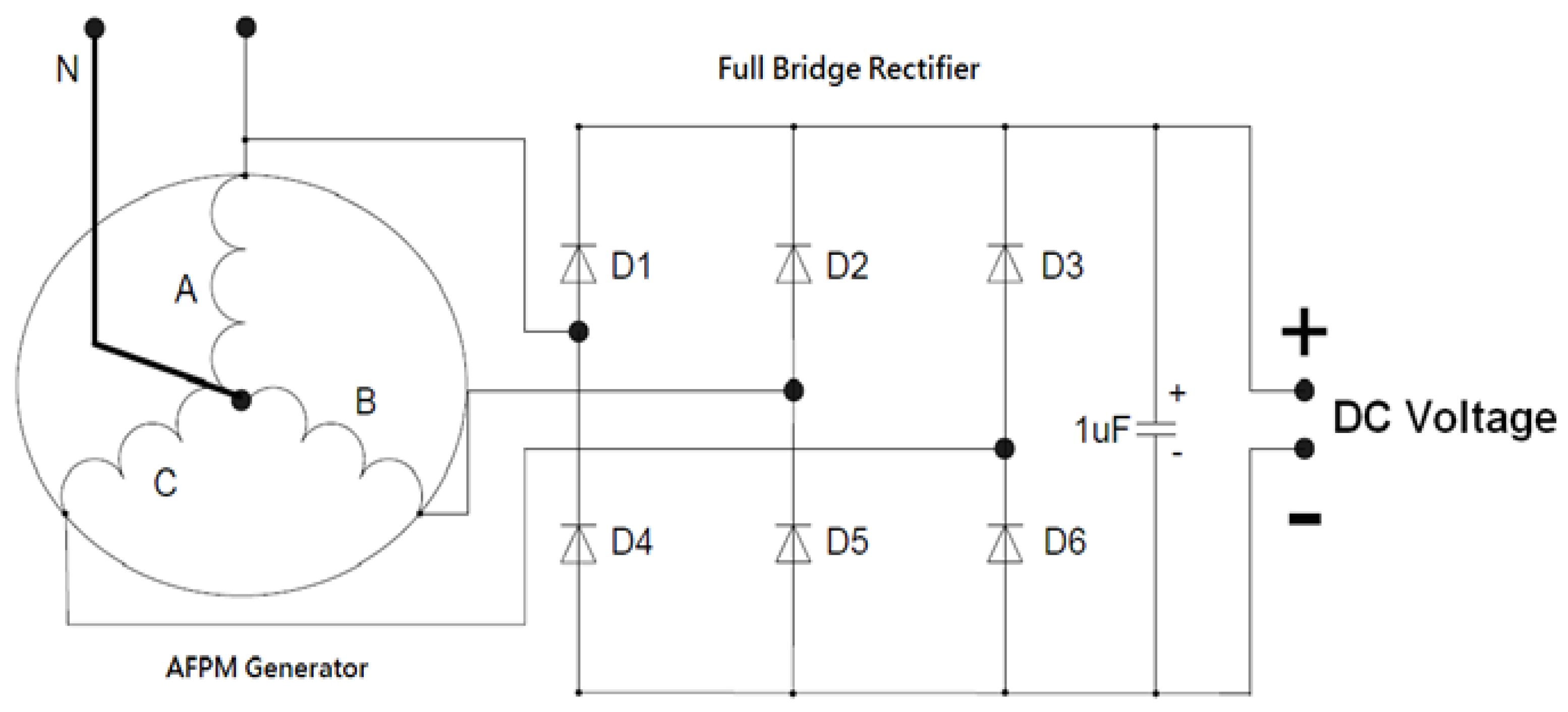
- (1)
- Low torque, only two components and its expandability;
- (2)
- By using a super capacitor (1 F to 10 F), hours of continuous operation without recharging can be accomplished.
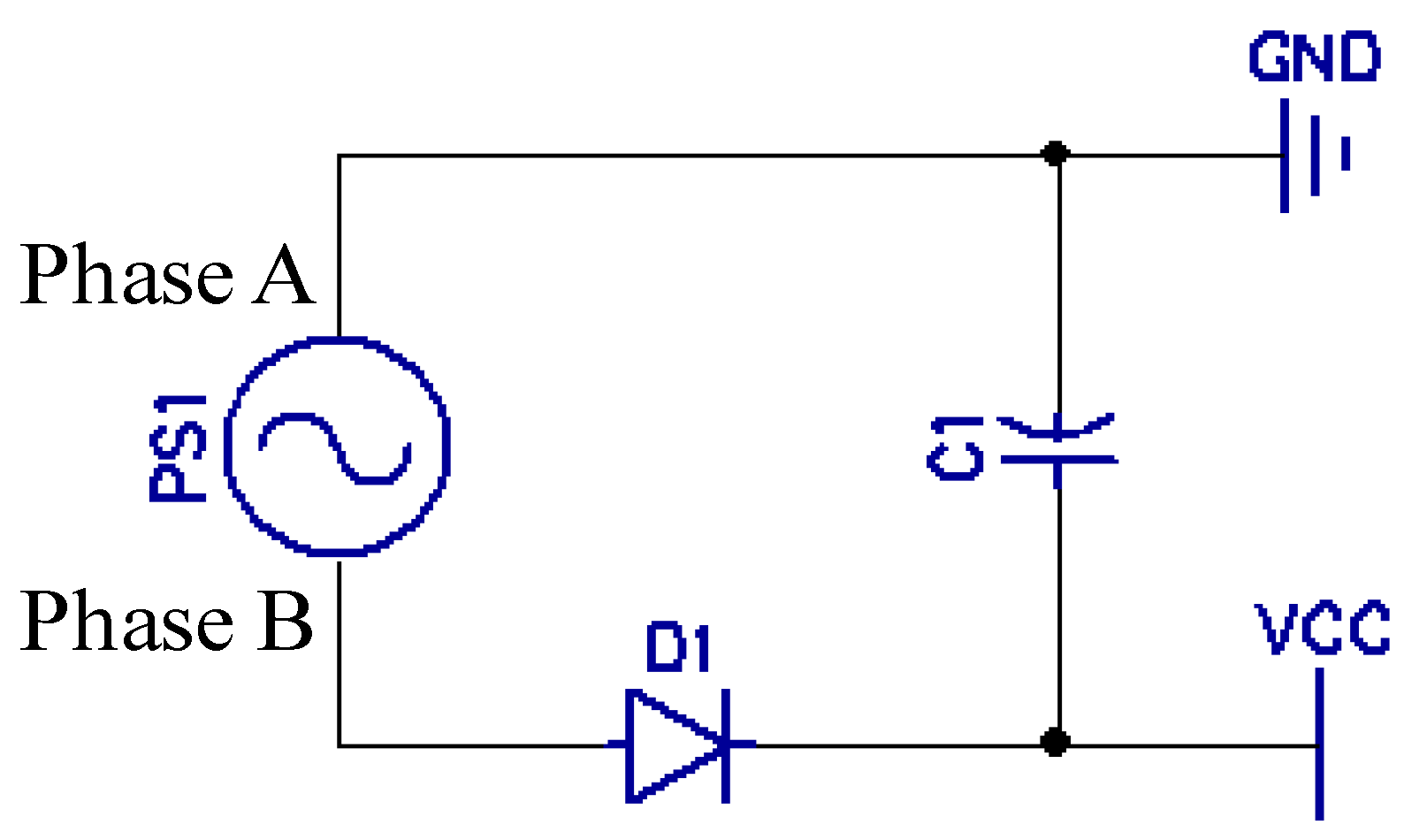

3. Finite Element Modeling/Simulation
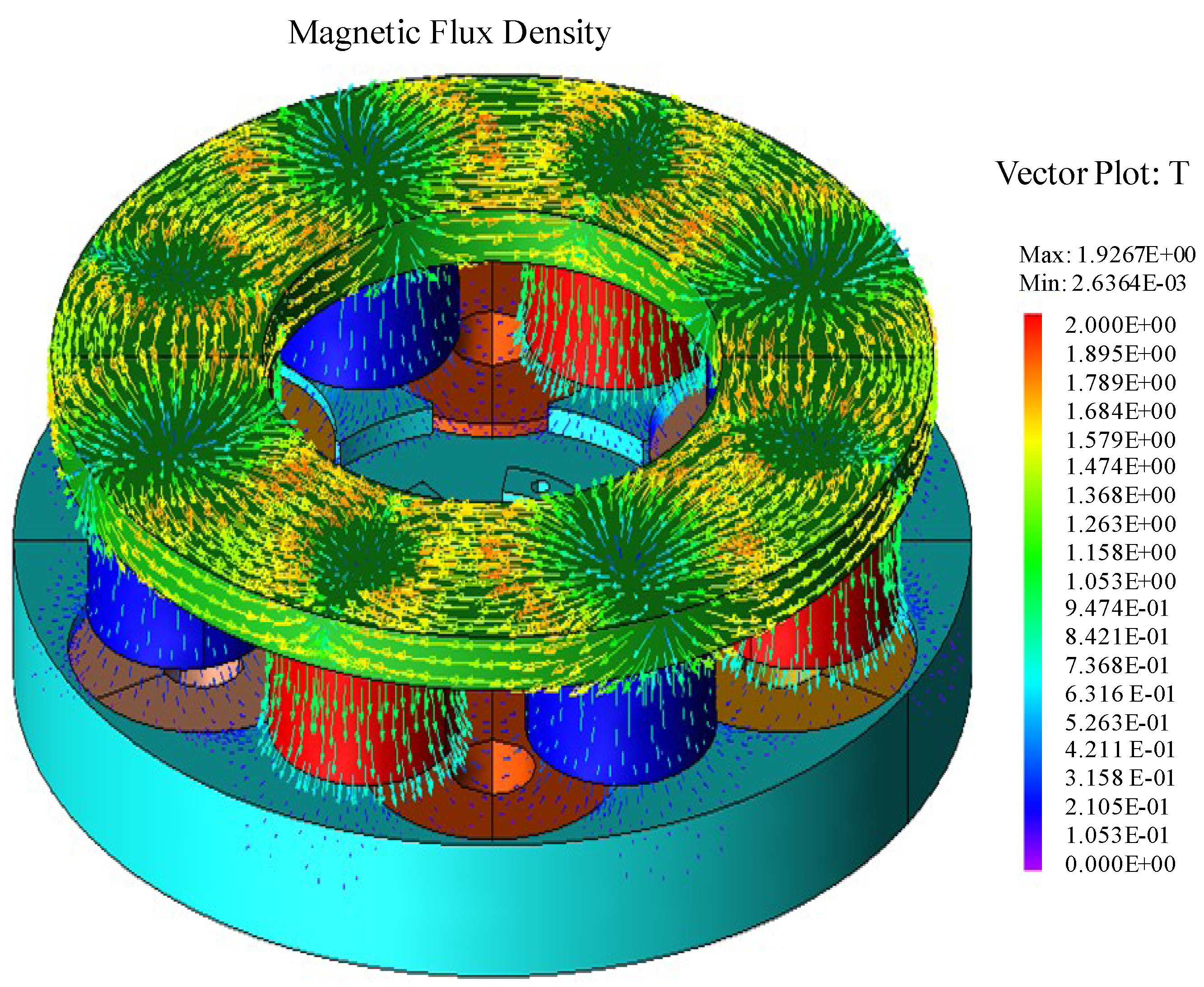

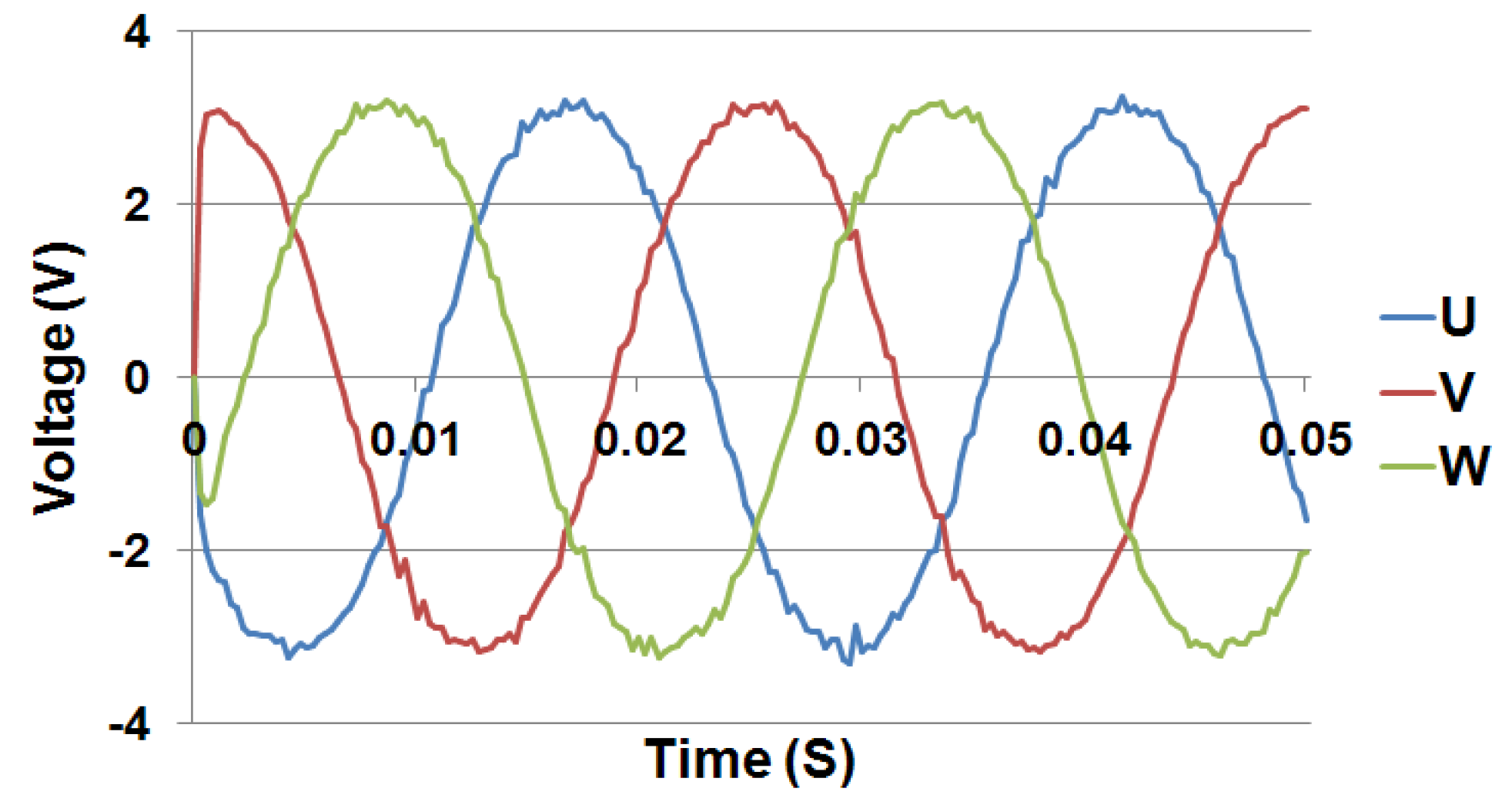
4. Experimental Setup


5. Result and Discussion
5.1. The Power Consumption
| RPS | Sensor | CPU | RTC | LCD | Total (µA) | Volts (V) | Total (μW) |
|---|---|---|---|---|---|---|---|
| 5 | 0.70 | 0.15 | 1.2 | 0.5 | 2.55 | 3.3 | 8.42 |
| 10 | 1.10 | 0.30 | 1.2 | 0.5 | 3.10 | 3.3 | 10.23 |
| 15 | 1.50 | 0.45 | 1.2 | 0.5 | 3.65 | 3.3 | 12.05 |
| 20 | 1.90 | 0.60 | 1.2 | 0.5 | 4.20 | 3.3 | 13.86 |
| 25 | 2.30 | 0.75 | 1.2 | 0.5 | 4.75 | 3.3 | 15.68 |
5.2. Power Generation for Single Phase
| RPS | Voltage (V) | RPM | I (A) | Total (mW) |
|---|---|---|---|---|
| 5 | 0.3 | 300 | 0.003 | 0.9 |
| 10 | 0.5 | 600 | 0.005 | 2.5 |
| 15 | 0.6 | 900 | 0.006 | 3.6 |
| 20 | 1.2 | 1200 | 0.012 | 14.4 |
| 25 | 1.4 | 1500 | 0.014 | 19.6 |
5.3. Power Consumption vs. Power Storage
| RPS | Voltage (V) | RPM | C (mF) | E (mJ) | Total (µW) |
|---|---|---|---|---|---|
| 5 | 0.3 | 300 | 10 | 0.45 | 450 |
| 10 | 0.5 | 600 | 10 | 1.25 | 1250 |
| 15 | 0.6 | 900 | 10 | 1.80 | 1800 |
| 20 | 1.2 | 1200 | 10 | 7.20 | 7200 |
| 25 | 1.4 | 1500 | 10 | 9.80 | 9800 |
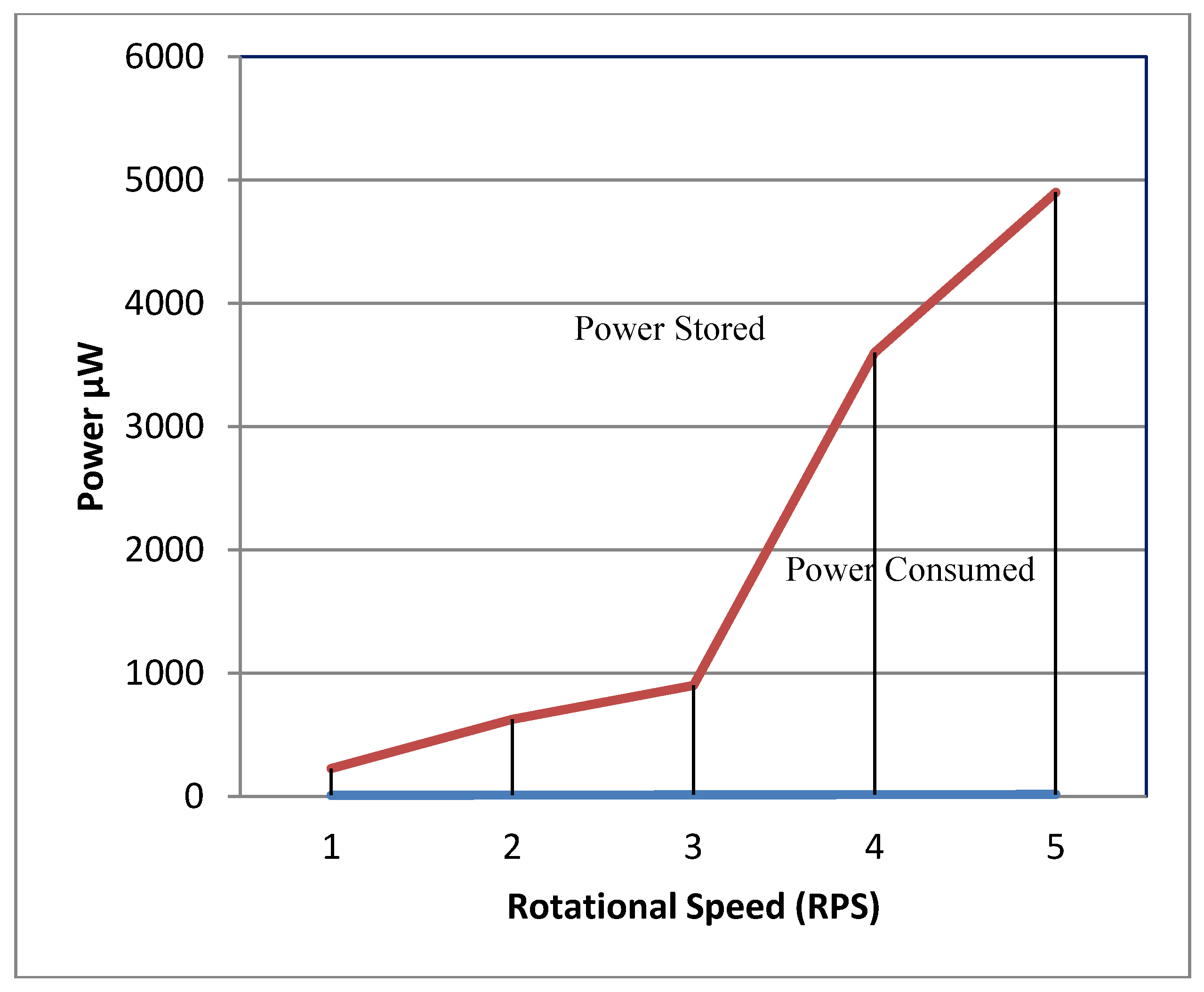
5.4. Comparison of Electrical Charging and Power Consumption
6. Conclusions and Outlook
Acknowledgments
Author Contributions
Nomenclature
| AC | Alternating Current |
| AFPM | Axial-Flux-Permanent-Magnet |
| AMR | Anisotropic-Magnet-Resistance |
| CAGR | Calculated Annual Growth Rate |
| DC | Direct Current |
| PZ | Piezoelectric Material |
| GPRS | General Packet Radio Service |
| FEM | Finite Element Method |
| IC | Integrated Circuit |
| MCU | Microcontroller Unit |
| NMOS | N-Channel MOSFET |
| PEEK | Polyether Ether Ketone |
| PM | Permanent Magnet |
| PMOS | P-Channel MOSFET |
| RPS | Revolutions Per Second |
| RPM | Revolutions Per Minutes |
| RTC | Real Time Clock |
| SMS | Short Message Service |
| MOSFET | Metal–Oxide–Semiconductor-Field-Effect Transistor |
| UVLO | Under-Voltage Lock Out |
| WDN | Water Distribution Network |
Conflicts of Interest
References
- Navigant Consulting, Inc. Smart Gas Meters Navigant Research. 2014. Available online: http://www.navigantresearch.com (accessed on 31 January 2014).
- Kolhare, N.R.; Thorat, P.R. An approach of flow measurement in solar water heater using turbine flow meter. Int. J. Eng. Res. Technol. 2013, 4, 1–4. [Google Scholar]
- Frenzel, F.; Grothey, H.; Habersetzer, C.; Hiatt, M.; Hogrefe, W.; Kirchner, M.; Lütkepohl, G.; Marchewka, W.; Mecke, U.; Ohm, M.; et al. Industrial Flow Measurement Basics and Practices; ABB Automation Products GmbH: Ladenburg, Germany, 2011. [Google Scholar]
- Thornton, J.; Sturm, R.; Kunkel, G. Water Loss Control Manual, 2nd ed.; McGraw-Hill Professional: New York, NY, USA, 2002; pp. 202–204. [Google Scholar]
- Artina, S.; Bragalli, C.; Erbacci, G.; Marchi, A.; Rivi, M. Contribution of parallel NSGA-II in optimal design of water distribution networks. J. Hydroinform. 2011. [Google Scholar] [CrossRef]
- Suribab, C.R. Differential evolution algorithm for optimal design of water distribution networks. J. Hydroinform. 2010, 12, 66–82. [Google Scholar] [CrossRef]
- Al-Omary, A.; El-Medany, W.; Al-Irhayim, S. Secure low cost AMR system based on GPRS technology. Int. J. Comput. Theory Eng. 2012, 4, 35–42. [Google Scholar]
- Britton, T.C.; Stewart, R.A.; O’Halloran, K.R. Smart metering: Enabler for rapid and effective post meter leakage identification and water loss management. J. Clean. Prod. 2013, 54, 166–176. [Google Scholar] [CrossRef]
- Wang, S.; Garcia, R. Development of a Self-Rechargeable Digital Water Flowmeter. J. Hydroinform. 2013, 15, 888–896. [Google Scholar] [CrossRef]
- Whittle, A.; Girod, L.; Preis, A.; Allen, M.; Lim, H.; Iqbal, M.; Srirangarajan, S.; Fu, C.; Wong, K.; Goldsmith, D. Waterwise@SG: A testbed for continuous monitoring of the water distribution system in Singapore. Water Disribution Syst. Anal. 2011. [Google Scholar] [CrossRef]
- SEIKO EPSON Corp. CMOS 16-bit Single Chip Microcontroller S1C17001 Technical Manual; SEIKO EPSON Corp: Taipei, Taiwan, 2012. [Google Scholar]
- Cavagnino, A.; Lazzari, M.; Profumo, F.; Tenconi, A. A comparison between the axial flux and the radial flux structures for PM synchronous motors. IEEE Trans. Ind. Appl. 2002, 38, 1517–1524. [Google Scholar] [CrossRef]
- Bumby, J.R.; Martin, R.; Mueller, M.A.; Spooner, E.; Brown, N.L.; Chalmers, B.J. Electromagnetic design of axial-flux permanent magnet machines. IEEE Proc. Electr. Power Appl. 2004, 151, 151–160. [Google Scholar] [CrossRef]
- Caricchi, F.; Crescimbini, F.; Honorati, O.; Bianco, G.L.; Santini, E. Performance of coreless winding axial-flux PM generator with power output at 400 Hz-3000 rev/min. IEEE Trans. Ind. Appl. 1998, 34, 1263–1269. [Google Scholar] [CrossRef]
- Gieras, J.F.; Wang, R.-J.; Kamper, M.J. Axial Flux Permanent Magnet Brushless Machines; Kluwer Academic Publisher: Dordrecht, The Netherlands, 2004. [Google Scholar]
- Lombard, N.F.; Kamper, M.J. Analysis and performance of an ironless stator axial flux PM machine. IEEE Trans. Energy Convers. 1999, 14, 1051–1056. [Google Scholar] [CrossRef]
- Wang, S.; Gain, Z.; Garcia, R.; Chang, P.; Cheng, C. Development of a self-power peak expiratory flow meter. Appl. Mech. Mater. 2013, 241–244, 576–580. [Google Scholar]
- Mitcheson, P.D.; Yeatman, E.M.; Rao, G.K.; Holmes, A.S.; Green, T.C. Energy Harvesting from Human and Machine Motion for Wireless Electronic Devices. Proc. IEEE 2008, 96, 1457–1486. [Google Scholar] [CrossRef]
- Gomez, C.; Oller, J.; Paradells, J. Overview and evaluation of Bluetooth low energy an emerging low-power wireless technology. Sensors 2012, 12, 11734–11753. [Google Scholar] [CrossRef]
- Linear Technology. LTC3588-1 Piezoelectric Energy Harvesting Power Supply Datasheet; Linear Technology: Milpitas, CA, USA, 2010. [Google Scholar]
- Whitaker, M. Energy Harvester Produces Power from Local Environment, Eliminating Batteries in Wireless Sensors. J. Analog Innov. 2010, 20, 1–36. [Google Scholar]
© 2014 by the authors; licensee MDPI, Basel, Switzerland. This article is an open access article distributed under the terms and conditions of the Creative Commons Attribution license (http://creativecommons.org/licenses/by/3.0/).
Share and Cite
Hao, W.S.; Garcia, R. Development of a Digital and Battery-Free Smart Flowmeter. Energies 2014, 7, 3695-3709. https://doi.org/10.3390/en7063695
Hao WS, Garcia R. Development of a Digital and Battery-Free Smart Flowmeter. Energies. 2014; 7(6):3695-3709. https://doi.org/10.3390/en7063695
Chicago/Turabian StyleHao, Wang Song, and Ronald Garcia. 2014. "Development of a Digital and Battery-Free Smart Flowmeter" Energies 7, no. 6: 3695-3709. https://doi.org/10.3390/en7063695
APA StyleHao, W. S., & Garcia, R. (2014). Development of a Digital and Battery-Free Smart Flowmeter. Energies, 7(6), 3695-3709. https://doi.org/10.3390/en7063695



